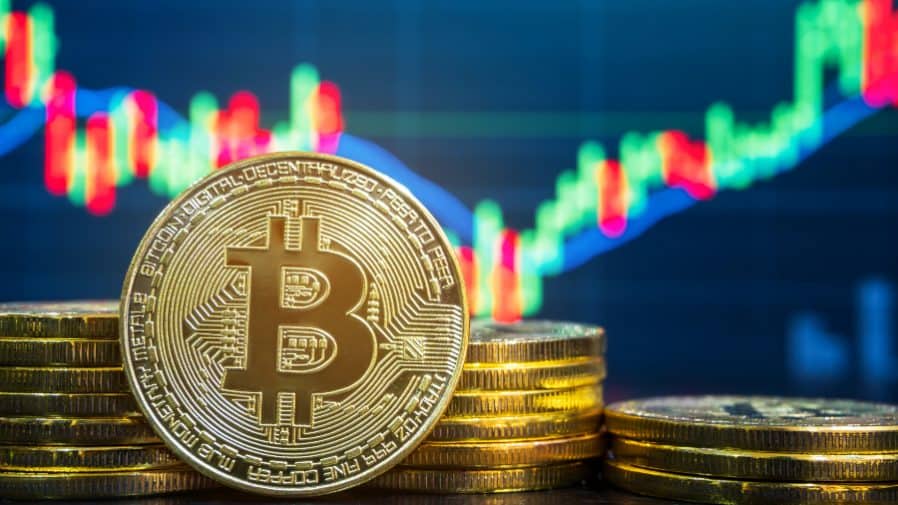Bitcoin, the most talked-about digital currency in the world, entered 2021 with a record-smashing rally. For the uninitiated, Bitcoin is a digital currency that can be sent from one user to another on the peer-to-peer blockchain network.
This new-age currency works online and allows users to be somewhat anonymous, thanks to decentralisation (no government or central banks needed for transactions).
Satoshi Nakamoto
It all started in 2008 when a Japanese man named Satoshi Nakamoto published his whitepaper about Bitcoin and how it works. According to Nakamoto, Bitcoin will have a finite number of supplies – 21 million bitcoin overall. Right now, we have around 17 million bitcoins already in circulation.
He also stated that the reason behind creating this digital currency is to remove third-party intermediaries that are generally required for digital money transfer. Many believe that he holds around 980,000 bitcoin, which makes him one of the richest men on the earth. However, in 2010, he vanished completely from the internet and hasn’t been heard since.
Digital currency is also known for its unpredictable nature over a short time and it has been proved in a couple of instances. In the latest development, Bitcoin breached the $30,000 mark for the first time on Saturday and reached an all-time high of $34,544 on Sunday, which coincidentally was the day of Bitcoin Network’s 12th anniversary.
Making quick gains out of positive developments
In 2020, the Bitcoin advanced more than 300%, surpassing even safe-haven investment avenues like the US dollar, silver, and gold. Many believe that the surge of Bitcoin is due to the bulk buying by big US investors and traders amid the speculations that it could become a mainstream payment method.
Alt season
Taking the momentum from Bitcoin, Ether, the native cryptocurrency of Ethereum Blockchain touched $1,161 for the first time since January 2018. This phenomenon is called “alt season” because many altcoins including Litecoin (LTC), Ripple (XRP), tend to see an upward trend as an effect of a strong Bitcoin rally.
According to Crypto bulls, Bitcoin is also seen as a hedge against inflation, similar to gold. Investors including Paul Tudor Jones and Stanley Druckenmiller have invested in Bitcoin and emphasised its potential as an inflation hedge.
Didn’t last long
However, the Bitcoin fizzled on Monday after a spectacular New Year show. At the time of writing this article, Bitcoin trades around $31,731, as per Binance. Many traders have said that the Bitcoin’s drop was not unusual for the volatile assets.
Why this rally?
“When you look at this bitcoin rally that we have been seeing in the last couple of weeks and months two big elements are driving it. One is the continuous entry of institutional players and the second is retail investors and their fear of missing out,” Henri Arslanian, PwC Global Crypto Leader, in an interview with CNBC.
Henri Arslanian also said that the trend will continue over the coming months, thanks to various platforms that allow players to invest in bitcoins.
Back in March 2020, the digital currency witnessed a major jump when PayPal enabled the option to use Bitcoin for its account holders. Other institutions including Fidelity, Square, and Microstrategy jumped into the cryptocurrency game as well.
According to various investors, the limited supply of bitcoin, which is produced by a process called ‘mining’, has helped power the upward trajectory as well.
Sergey Nazarov, the cofounder of Chainlink, said, “It’s very likely that the asset will eventually pass $100,000 per coin.”
On the other hand, Paul Hickey of Bespoke Investment Group, said, “The weaker dollar could also be playing a role in Bitcoin’s furious ascent. The last time the dollar saw a larger six-month decline was in the second half of 2017, that’s also the same time that Bitcoin first started to go mainstream.”
It’s worth mentioning here that in 2017, Bitcoin came close to the $20,000 mark only to hit extreme lows and fall below $3,300. However, many crypto fans claim that the rally is unlike 2017 since it is now driven by institutional demand rather than retail speculation.
Is it safe?
When it comes to investing, there are high-risks involved, due to its volatile nature. According to experts, digital cryptocurrency should be seen as high-risk assets, which means one should never invest money that they cannot afford to lose.
Also, the fact that bitcoin transactions are non-reversible makes it even riskier as well. Overall, this experimental currency is still in the development stage with lots of improvements and tweaks to make. Having said that, nobody can predict Bitcoin’s future, neither you nor me or anyone.
Do comment on your thoughts about the bitcoin rally below!
The post The boom and bust of Bitcoin: How exactly it works and will it last? appeared first on UKTN (UK Tech News).



